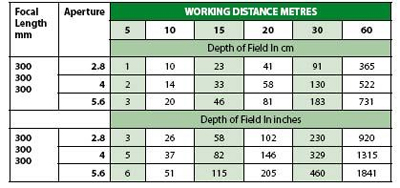articles/Sports/sportingchance-page4
Sporting Chance - part 4 of 1 2 3 4 5 6 7
by Mike McNamee Published 01/09/2006

Peak of Action Shooting
One way of giving yourself a little more time (ie a slower shutter speed) is to shoot at the peak of the action. If you use a pole vaulter as an example, they will be moving horizontally very quickly on the run up and this speed is translated to vertical motion as they climb upwards. As the vaulter goes over the bar they tend to be moving very slowly in all directions, just the time to capture them sharply with a lower
shutter speed. You can gain two or three stops of leeway and still keep your image sharp with good timing. There are other peaks of action moments in other sports, for example
1. The tennis ball at the top of the service throw up.
2. The golfer at the top of their back swing.
3. The basketball player at the top of their leap towards the basket.
as your speed, your baseline exposure speed is 1/500ths (or 1/2000ths at 400ISO). Using a 2x converter will cost you two stops and so you drop to an almost unmanageable 1/125th if you stay on ISO 100. Using a converter is a double whammy, you need faster shutter speeds to accommodate the higher magnification, but you are losing aperture at the same time.
As with all photography, the settings are a compromise between camera shake, subject speed, digital noise and sometimes the simple need to just get a shot at all costs!
Shutter Speed Selection
Assuming that you need sharp images, it is possible to compute the required shutter speed to stop action under various circumstances. Typical subject speeds are shown in the table (they vary - international class athletes go faster, hit faster, bowl faster, etc). For a 300mm lens the shutter speeds at various distances and speeds are shown.
By way of example if we take a hockey player moving at 20mph (equivalent to12s for 100 metres) and a distance of 20m, we require 1/6000th to stop the action. This would need an aperture of f2.8 and an ISO of 200 in bright sunshine, close to the limit of available technology.
If the subject is now a bowler, he will be at 60m minimum but you have to add the arm action to his basic speed of 20mph, which brings the ball speed up to close to 90mph for a test bowler. Again this demands a shutter speed of 1/4000th. With an 800mm lens you would have to go to 400ISO, probably faster.
Please Note:
There is more than one page for this Article.
You are currently on page 4
- Sporting Chance page 1
- Sporting Chance page 2
- Sporting Chance page 3
- Sporting Chance page 4
- Sporting Chance page 5
- Sporting Chance page 6
- Sporting Chance page 7
1st Published 01/09/2006
last update 18/07/2022 16:35:44
More Sports Articles
There are 29 days to get ready for The Society of Photographers Convention and Trade Show at The Novotel London West, Hammersmith ...
which starts on Wednesday 14th January 2026








